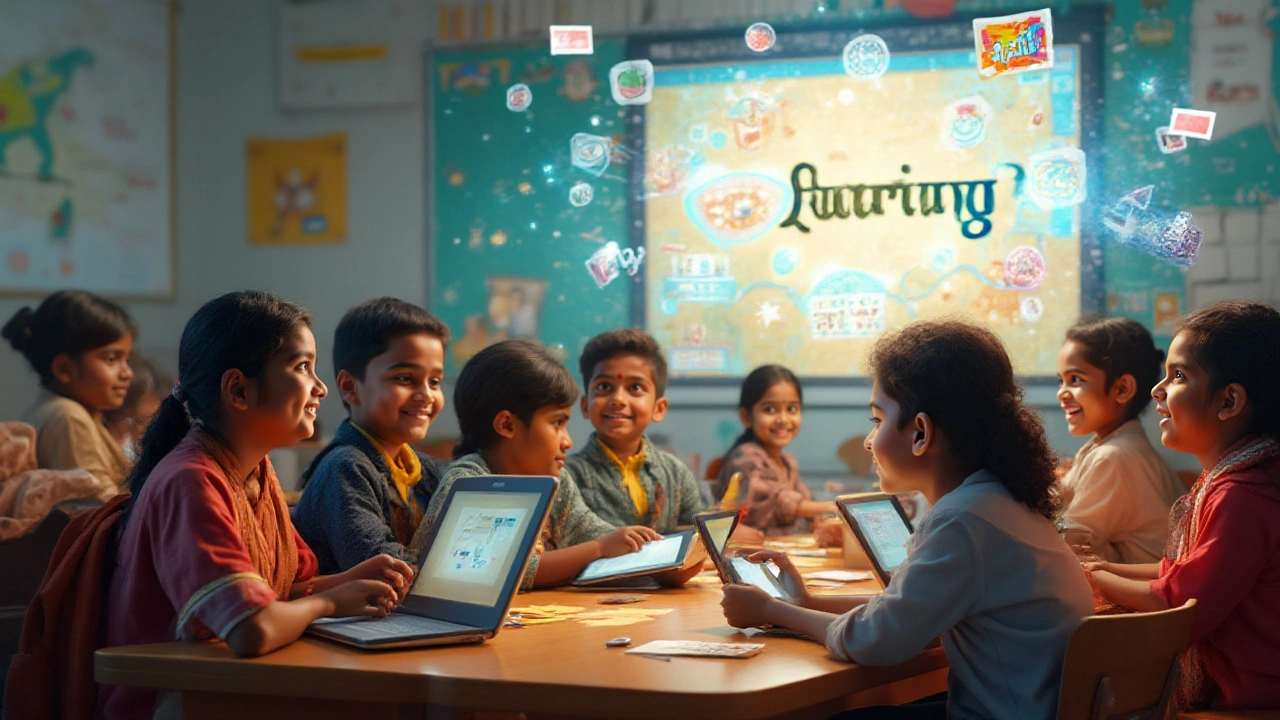If you’ve ever sat at your laptop in pajamas while attending a class, you already know what an eLearning system feels like. But there’s more going on behind the scenes than just video calls or digital textbooks. Today, there are more screens at study tables than there are books. In 2025, the global eLearning market is estimated to cross the $500 billion mark. That’s not pocket change; it’s a tidal shift in the way people access knowledge. The crazy part? It isn’t slowing down anytime soon. What's at the heart of all this? eLearning systems: the backbone that lets people learn anywhere, anytime, and pretty much anyhow.
What Is an eLearning System and How Does It Work?
At its core, an eLearning system is an organized platform that lets people and organizations create, manage, deliver, and track education and training over the internet. Think of it as a classroom you can carry in your backpack—or sometimes even in your pocket. Whether you’re in your room, a noisy café, or stuck at the airport, as long as you’ve got Wi-Fi, your learning doesn’t pause. These platforms aren’t only for schools; businesses, NGOs, government offices, and even hospitals use them to train employees, update skills, and share critical info.
The typical eLearning system includes features you probably recognize: modules, quizzes, multimedia lessons, and real-time chat. Some of the big names—like Moodle, Canvas, and Blackboard—have been in the game for a while, but there are hundreds of others tailored to different needs, from corporate upskilling to niche hobbies like learning the ukulele online. At its best, an eLearning system makes the technical bits invisible. For all the bells and whistles—like gamified quizzes, leaderboards, or AI-assisted tutors—it’s the smooth user experience that keeps you coming back.
It's not guesswork either; eLearning platforms use analytics to track what helps students most. If a quiz question trips up half the class, instructors see it in real time. They can tweak lessons or provide support right away. Instructors can upload everything: PDFs, videos, podcasts, infographics. And for learners, all this gets saved to their accounts—they can rewatch, rewind, or review anytime.
There’s a funny myth that eLearning is just about watching endless YouTube lectures. Real systems go way beyond videos. They include interactive simulations, group discussion forums, breakout rooms for teamwork, and even virtual reality experiences. Some platforms let you drag molecules around to simulate chemical reactions, or dissect virtual frogs—no weird smells involved. “The best technology disappears,” said Tony Bates, author and eLearning heavyweight.
"A good eLearning system should make the learning experience so seamless, students barely notice the tech at all."
Now, security is a huge deal here. Since these systems hold personal info, grades, exam scores—even biometric data in some cases—developers tie them down with multi-factor authentication and heavy encryption. When COVID-19 hit, security lapses were exposed overnight. So now, cyber safety is right up there with user-friendly design.
Another secret sauce? Flexibility. eLearning systems offer self-paced courses, live webinars, on-demand help, and certifications that you can download to your LinkedIn with one click. Micro-credentials and badges? They’re the new trophies, and they live right in your profile.
And if you’re wondering about cost, here’s the deal: setting up a high-powered eLearning system can get pricey upfront, especially for custom builds, but spreading it across thousands of users often makes it way cheaper than traditional classrooms in the long run.

Features and Benefits That Set eLearning Systems Apart
Traditional classrooms are starting to look a bit old-school next to what today’s eLearning systems can do. On these platforms, you’re not just a passive listener. You can interact, ask, discuss, compete, or even create your own content. Features that used to sound sci-fi now feel totally normal in daily learning.
Let’s talk features. Most systems offer a dashboard—your personal HQ for deadlines, progress, feedback, and schedules. You get nudges for upcoming assignments and reminders when live classes are about to start. Many blend in modern tools like instant translation, reading aids for people with dyslexia, and voice-to-text for quick notes or messages.
Quizzes aren’t the same old multiple-choice grind anymore. Some use adaptive assessments that get harder or easier based on your answers. Instant feedback means there’s no more waiting in the dark for grades. If you’re struggling with a concept, interactive lessons highlight problem areas and direct you to tutorials. For teamwork, built-in group wikis, collaborative documents, and chat channels let you work together, no matter where teammates are in the world.
Video calls on these systems can now handle whiteboards you can scribble on from your phone. Leaders in platform design are baking in AI that can answer questions 24/7. Stuck at 2am on a calculus problem? The AI bot might not have all the feels of a human tutor, but it can usually walk you through the basics. And if you want to dive deeper, many systems point you to full-blown guided learning paths with every resource you’ll need in one place.
There are some perks that don’t get enough credit. One: accessibility. For students with disabilities, eLearning systems can be set up for screen readers, simplified navigation, closed captions, or even completely voice-controlled experiences. Another: personalization. These systems remember your learning style. If you retain info better from podcasts, or you like to see things in charts, the platform adapts—sometimes automatically—to match how you learn best.
Data doesn’t just sit there, either. It works for you, showing trends in your progress and even suggesting when you should review old lessons before they fade away. Organizations use these insights too, to see what teaching methods actually work and which don’t.
Then there’s the huge benefit of scalability. Want to train thousands of new hires in a single week, across five different countries, in five different languages? eLearning platforms have the infrastructure ready, and translation happens almost on the fly. That’s why global companies and universities use the same systems, just tailored to their needs.
Gamification isn’t just a buzzword now—it’s standard. Badges for finishing chapters, points for participating in discussions, and leaderboards for some friendly competition keep learners coming back. Some studies say these features boost engagement by up to 60%. If you’re motivated by unlocking achievements or beating high scores, this is your jam.
What’s the catch? Technical hiccups can sometimes throw off the rhythm, and not every course creator is a born entertainer—some material will always feel dry. But the system itself is built so anyone with a basic understanding of web apps can jump in and learn fast. Most eLearning providers offer free demos for teachers or organizations to experiment with the system before they commit.
Tips for making the most of an eLearning system: customize your notification settings so you’re not bombarded by emails or messages at weird hours, use built-in progress reports to set mini-goals, and reach out to your platform’s helpdesk if a feature isn’t working the way you expect. There’s a good chance your question has already been asked and solved in the platform’s forums.
And here’s something that’s often missed: privacy settings. Spend some time checking and fine-tuning who can see your progress, posts, or shared files. Some employers or schools set everything up for you, but it’s still worth double-checking.

How eLearning Systems Are Impacting Education and Work
One thing’s clear: eLearning systems are not just a backup plan for emergencies. Since 2020’s wild ride, they’ve become the centerpiece for how millions learn and work. The proof is everywhere: India’s National Digital Education Architecture (NDEAR) is rolling out digital platforms to 275 million students; in the U.S., at least 77% of companies now use online learning for staff training. Even medical schools have replaced some live dissections with virtual labs accessible on tablets.
The reach goes far beyond classrooms. Gig economy workers log on for skill updates. Retirees use these systems to pick up hobbies, from art to astronomy. Young coders in Ghana use open-source eLearning platforms not just to learn, but to teach others—closing gaps that old, physical classrooms couldn’t touch. That’s democratization of learning on a level nobody predicted twenty years ago.
The pandemic showed just how fast people can adapt, given the right tools. Teachers learned to build engaging lessons on Google Classroom in weeks. HR teams created onboarding sessions in Storyline or Articulate. Big universities pulled off semester-long courses entirely online—and saw enrollment spike, not shrink. McKinsey’s 2024 report found that 90% of employers using eLearning saw faster onboarding, higher job satisfaction, and lower training costs compared to pre-digital days.
There’s cultural impact, too. eLearning platforms allow for language preservation and revitalization, with universities uploading lessons in endangered dialects. Scientists in Brazil taught climate adaptation strategies online, reaching rural farmers who’d never set foot on a campus. When information spreads this easily, you see ripple effects in jobs, innovation, and even in how people solve everyday problems.
Yet, eLearning is not a silver bullet. Internet access still leaves out whole pockets of the world. In 2025, around 29% of people globally are still offline, which is a huge number no matter how you cut it. Tech stress, digital fatigue, and privacy concerns are real. The best eLearning systems are getting better at blending high-tech features with real human support. Hybrid models—where online meets real-world sessions—are becoming the new standard, giving students the best of both worlds.
For those eyeing the future, eLearning systems are already experimenting with blockchain for secure credentialing and AI companions that’ll know when you’re zoning out (yes, it’s as weird as it sounds). The MIT OpenCourseWare project alone has logged more than 300 million visits and is credited with inspiring open online course models worldwide. “We are just scratching the surface of what digital learning can offer,” says Coursera co-founder Daphne Koller.
“Every year, the border between what’s possible and what’s mainstream shifts just a bit further.”
The takeaway? eLearning systems are now woven deeply into how we learn, how we work, and how we share ideas. Whether you’re gunning for a promotion, switching careers, or just learning for the fun of it, odds are, your next big step will involve logging in, picking a module, and letting curiosity take over.
